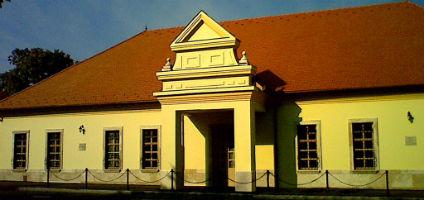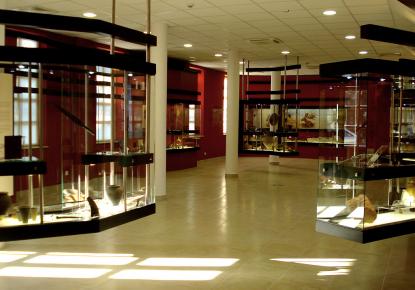2025. December 29. Monday
"Matrica" Museum - Százhalombatta
 |
Address: 2440, Százhalombatta Gesztenyés út 1-3.
Phone number: (23) 354-591, (23) 540-070
E-mail: info@matricamuzeum.hu
Opening hours: Tue-Sun 10-17
Park 01.04-31.10. |
Museum tickets, service costs:
|
Ticket for adults
|
780 HUF
|
|
|
Ticket for adults
|
780 HUF
|
|
|
Group ticket for adults
(on prior notice)
|
780 HUF
|
|
|
Group ticket for adults
|
780 HUF
|
|
|
Ticket for students
|
360 HUF
|
|
|
Ticket for students
|
360 HUF
|
|
|
Group ticket for students
(on prior notice)
|
360 HUF
|
|
|
Group ticket for students
|
360 HUF
|
|
|
Ticket for pensioners
|
360 HUF
|
|
|
Ticket for pensioners
|
360 HUF
|
|
|
Ticket for families
(max. 5 people)
|
2280 HUF
|
/ family
|
|
Ticket for families
|
2280 HUF
|
/ family
|
|
Combined ticket for adults
(valid for the Museum + the Archeology Park)
|
1200 HUF
|
|
|
Combined ticket for students
(valid for the Museum + the Archeology Park)
|
600 HUF
|
|
|
Combined ticket for pensioners
(valid for the Museum + the Archeology Park)
|
600 HUF
|
|
|
Combined ticket for families
(valid for the Museum + the Archeology Park, max. 5 people)
|
3000 HUF
|
/ family
|
The exhibition leads the visitors through the history of Százhalombatta, the changes that took place in town, the reasons of the changes and the consequences by way of object relics.

The material is displayed in chronological and spatial order. We deal with the relations of people and nature, the counter effects from the first human communities to the time when people made their environment too fragile. Changes in town express the effect of people’s deed on the environment. It all is a miniature version of what is going on in the world at large.
The material is grouped into three units. We deal with the memories of sacred- and ritual life, everything not part of the everyday living environment, doings in communities, villages and towns.
Religious objects, items related to ideologies and belief systems are on display in the sacred space, including religious practices, funerals and holidays.
The profane room offers memories of everyday life, inside and outside the house and work around the house, including everyday chores, crafts and occupations.
The outside exhibition space deals with work and activity of people outside the habitats, as well as the relation of these to the natural environment, including agriculture, hunting, trade and mining.
In the museum yard, personal articles from various archaeological periods, and tombstones with inscriptions from graves tell about belief in the afterworld and death.

The material is displayed in chronological and spatial order. We deal with the relations of people and nature, the counter effects from the first human communities to the time when people made their environment too fragile. Changes in town express the effect of people’s deed on the environment. It all is a miniature version of what is going on in the world at large.
The material is grouped into three units. We deal with the memories of sacred- and ritual life, everything not part of the everyday living environment, doings in communities, villages and towns.
Religious objects, items related to ideologies and belief systems are on display in the sacred space, including religious practices, funerals and holidays.
The profane room offers memories of everyday life, inside and outside the house and work around the house, including everyday chores, crafts and occupations.
The outside exhibition space deals with work and activity of people outside the habitats, as well as the relation of these to the natural environment, including agriculture, hunting, trade and mining.
In the museum yard, personal articles from various archaeological periods, and tombstones with inscriptions from graves tell about belief in the afterworld and death.
